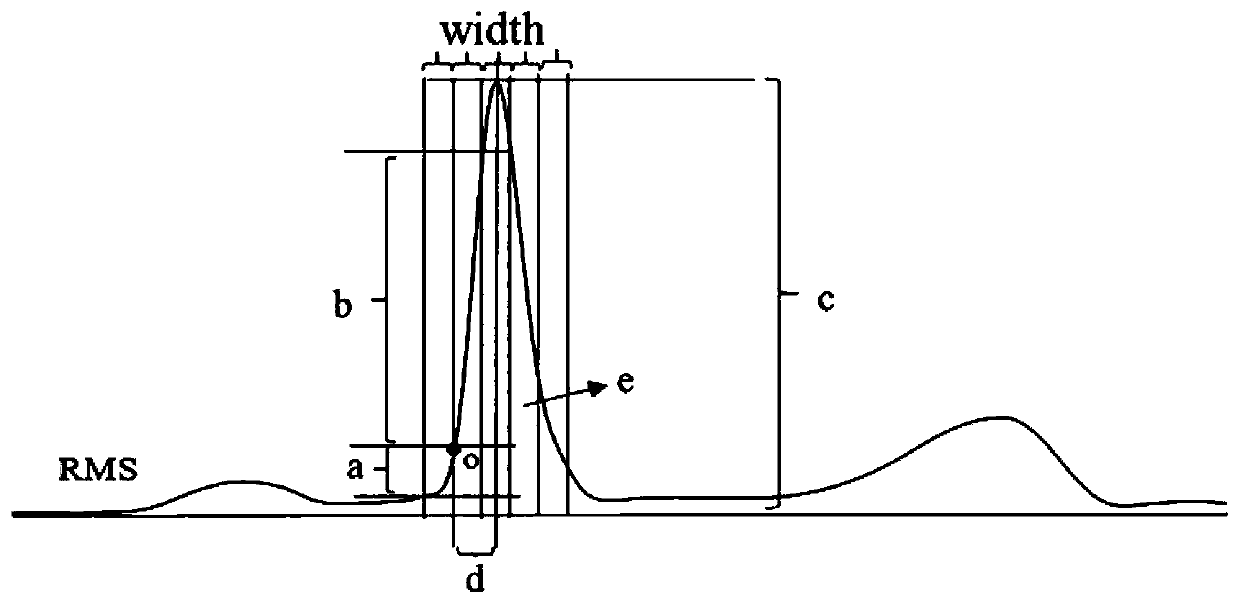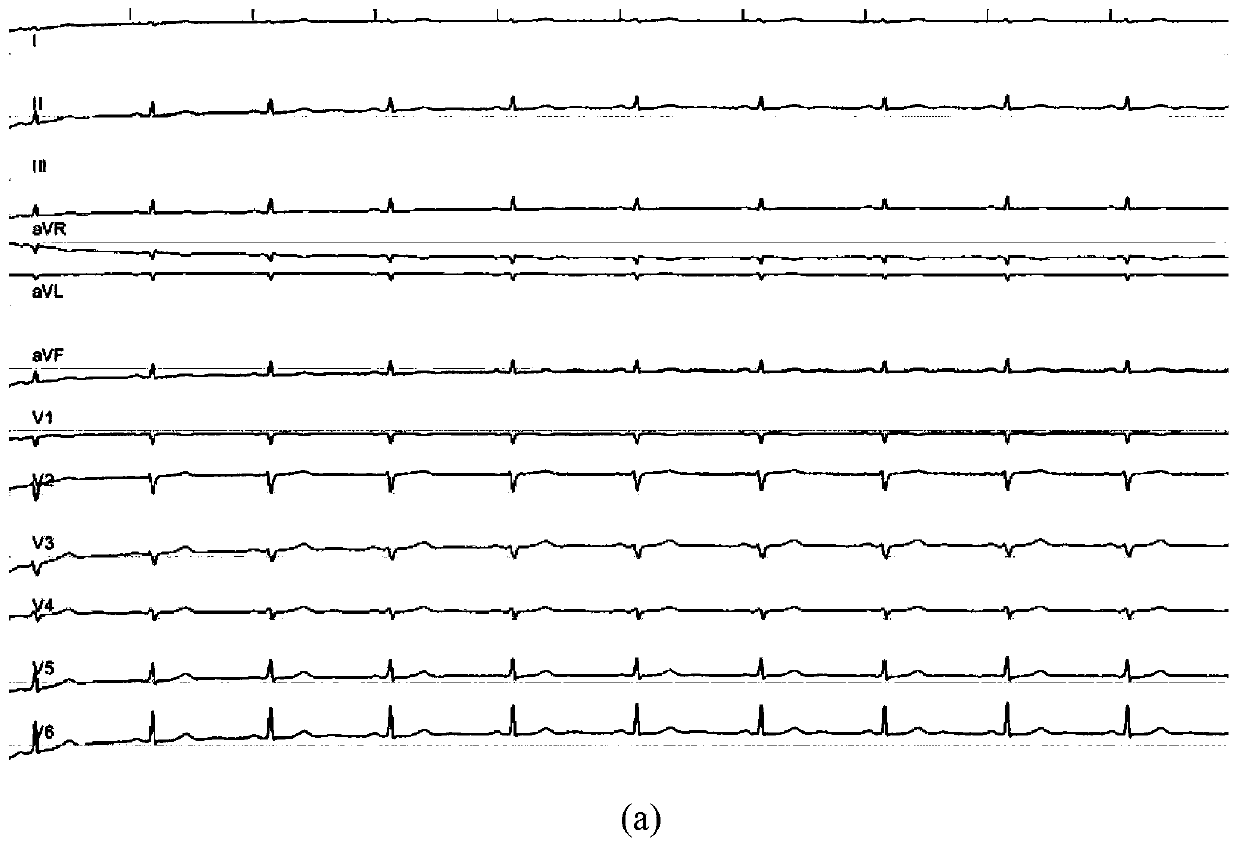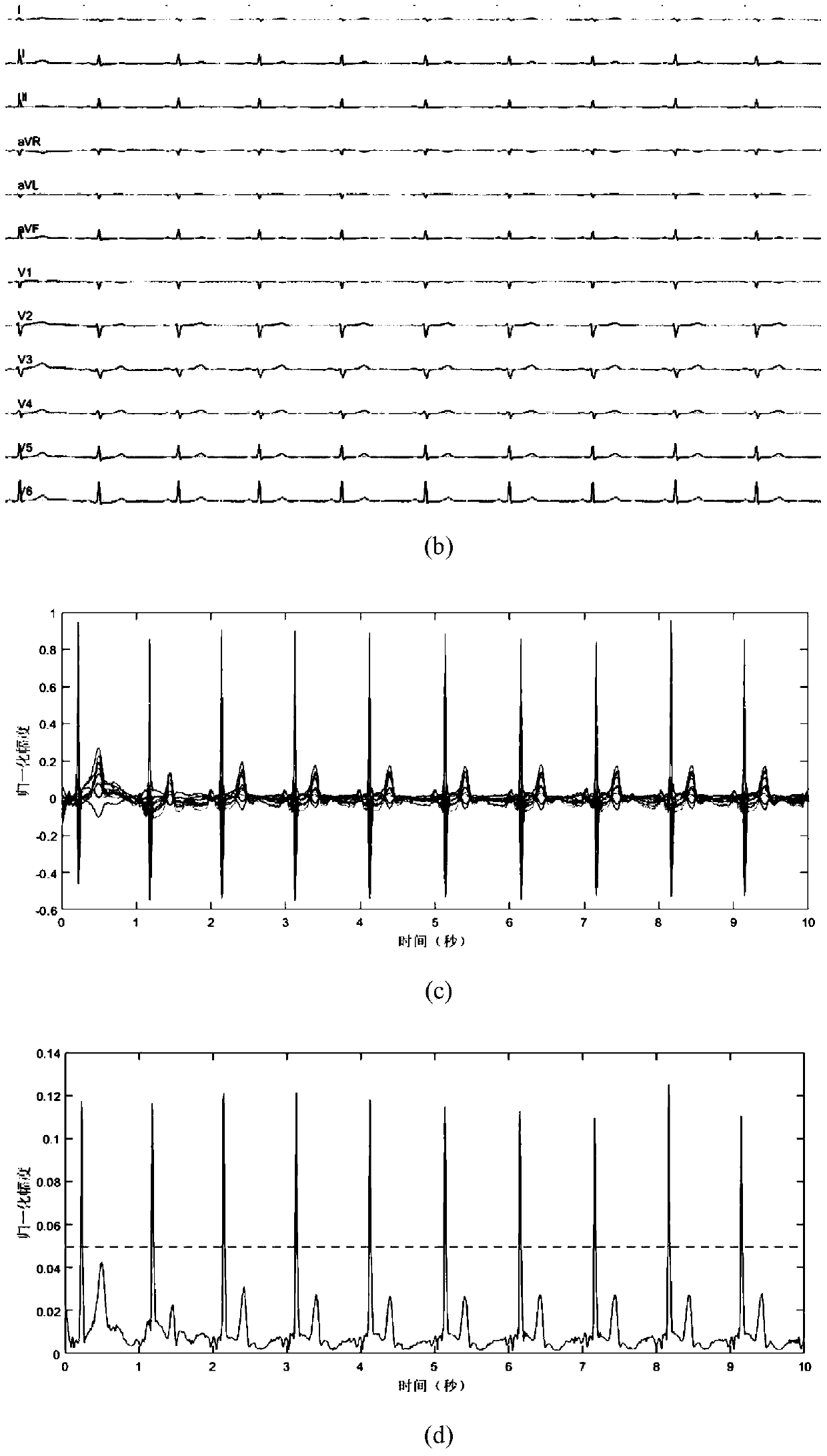Method of detecting QRS complex start point in multi-lead electrocardiogram
A technology of QRS complexes and detection methods, which is applied in diagnostic recording/measurement, medical science, sensors, etc., can solve the problems of irregular RR interval, strong algorithm dependence, and large amount of calculation of wavelet transform method, and achieve real-time detection Strong performance, high detection accuracy and simple algorithm
- Summary
- Abstract
- Description
- Claims
- Application Information
AI Technical Summary
Problems solved by technology
Method used
Image
Examples
Embodiment 1
[0037] Embodiment 1: The method for detecting the starting point of the QRS complex of the present invention is applied to the sinus rhythm signal (the rhythm of different parts is consistent). In this embodiment, the body surface 12-lead electrocardiogram (that is, the number of leads n=12) with a sampling rate of 1000 Hz is used, and the workflow is as follows:
[0038] (1) Observe the body surface 12-lead electrocardiographic signal (digital signal) of the sinus rhythm that is collected synchronously, such as figure 2 (a) shown. The light gray horizontal line for each lead represents its zero potential line. It can be seen from the figure that the ECG signals of some leads have serious baseline drift, such as I, II, III, aVR, aVL, aVF, V2, V3, V4, V5, and V6.
[0039](2) Preprocessing the body surface 12-lead electrocardiographic signals in sinus rhythm in step (1). Firstly, the signal is decomposed into 10 layers by using the sym4 wavelet basis function. For the 1000Hz...
Embodiment 2
[0044] Embodiment 2: apply the detection method of QRS wave group starting point of the present invention to premature ventricular beat signal (before sinoatrial node impulse has not yet arrived at ventricle, any position in the ventricle or the ectopic rhythm point of the interventricular septum sends out electric impulse in advance , causing depolarization of the ventricles). In this embodiment, the body surface 12-lead electrocardiogram (that is, the number of leads n=12) with a sampling rate of 1000 Hz is used, and the workflow is as follows:
[0045] (1) Observe the body surface 12-lead electrocardiographic signal (digital signal) of polymorphic ventricular premature beats that is collected synchronously, such as image 3 (a) shown. The light gray horizontal line of each lead indicates its zero potential line. It can be seen from the figure that there are serious baseline drifts in the ECG signals of some leads, such as II, III, aVR, aVL, AVF, V1, V3, V4, V5 , V6.
[0...
Embodiment 3
[0051] Embodiment 3: The method for detecting the starting point of the QRS complex of the present invention is applied to the signal of atrial fibrillation (there are multiple rhythms, and the rhythms in different parts may be inconsistent). In this embodiment, the body surface 12-lead electrocardiogram (that is, the number of leads n=12) with a sampling rate of 1000 Hz is used, and the workflow is as follows:
[0052] (1) observe the body surface 12-lead electrocardiographic signal (digital signal) of atrial fibrillation collected synchronously, such as Figure 4 (a) shown. The light gray horizontal line of each lead represents its zero potential line. It can be seen that the ECG signals of some leads have serious baseline drift, such as I, II, aVR, aVL, V3, V5, and V6.
[0053] (2) Preprocessing the 12-lead electrocardiographic signal of atrial fibrillation in step (1). Firstly, the signal is decomposed into 10 layers by using the sym4 wavelet basis function. For the 1000...
PUM
 Login to View More
Login to View More Abstract
Description
Claims
Application Information
 Login to View More
Login to View More - R&D
- Intellectual Property
- Life Sciences
- Materials
- Tech Scout
- Unparalleled Data Quality
- Higher Quality Content
- 60% Fewer Hallucinations
Browse by: Latest US Patents, China's latest patents, Technical Efficacy Thesaurus, Application Domain, Technology Topic, Popular Technical Reports.
© 2025 PatSnap. All rights reserved.Legal|Privacy policy|Modern Slavery Act Transparency Statement|Sitemap|About US| Contact US: help@patsnap.com



